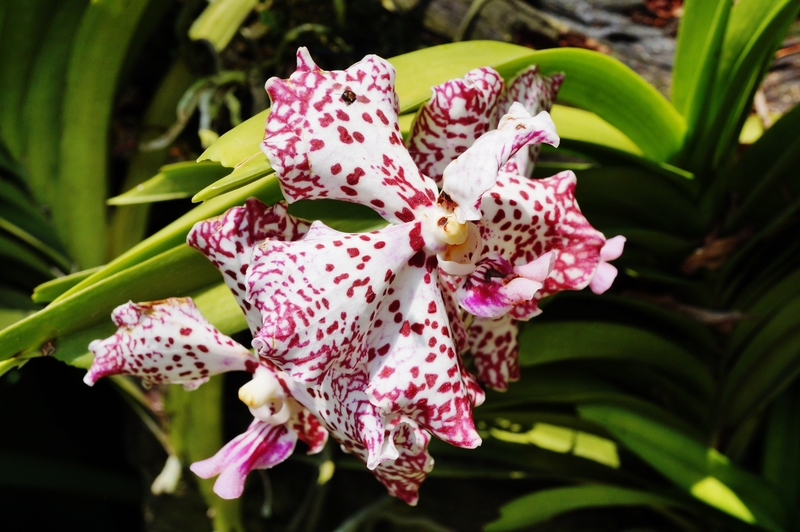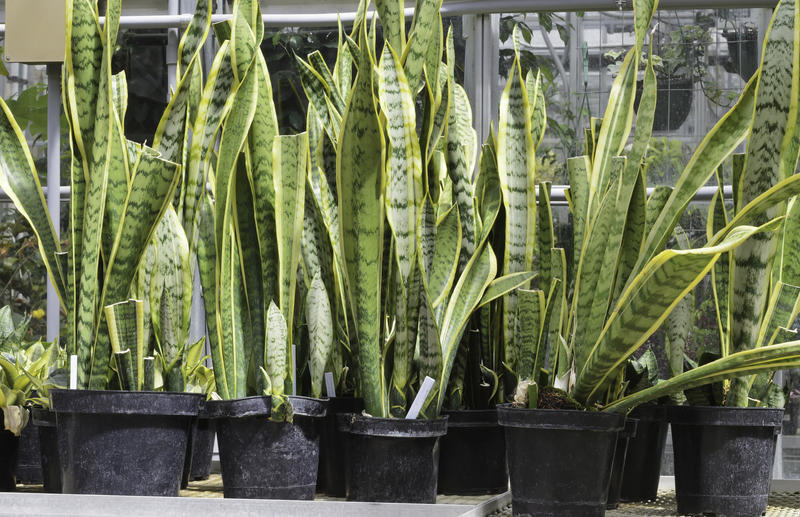Growing a Dog-Friendly Backyard Escape
Posted on 27/05/2025
Growing a Dog-Friendly Backyard Escape
With more households embracing the joy of canine companionship, pet owners are increasingly searching for ways to create a secure and enjoyable outdoor oasis for their furry friends. Developing a dog-friendly backyard escape not only enriches your pet's life but transforms your yard into a harmonious, low-maintenance, and serene space for the entire family. In this comprehensive guide, discover how to craft an outdoor retreat tailored to your dog's needs without sacrificing style, safety, or your garden's health.

Benefits of a Dog-Friendly Backyard
- Physical Exercise: A thoughtfully designed yard allows your dog to run, dig, and play, promoting optimal health.
- Mental Stimulation: Sensory gardens, agility elements, and diverse landscaping keep your pup engaged and happy.
- Bonding Opportunities: Safe outdoor spaces enhance the quality time spent with your dog, strengthening your relationship.
- Reduced Boredom: Dogs who have a stimulating backyard are less likely to engage in destructive behaviors inside the house.
Planning Your Dog-Friendly Garden Retreat
Before starting your backyard transformation, consider your dog's size, age, breed, personality, and energy levels. Some enjoy digging, others love lounging, while playful pups may crave agility features. To create a welcoming dog-friendly backyard, integration of landscape design and pet-safety is key.
Assess Your Space
- Identify Potential Hazards: Remove toxic plants, sharp tools, and unsafe chemicals.
- Observe Sun and Shade Patterns: Note where the sun hits throughout the day for designated rest or play areas.
- Map Out Traffic Patterns: Dogs often create "runs" along fences or paths; work with their natural routes for a harmonious design.
Key Elements of a Backyard Retreat for Dogs
1. Secure Fencing and Safe Boundaries
Security is paramount for any dog-friendly backyard escape. Choose fencing tall and sturdy enough to prevent escapes. For small dogs, ensure there are no gaps underneath, and for agile jumpers, consider fence extenders or coyote rollers.
- Material Choice: Opt for robust wooden, vinyl, or metal options over chain link, which can injure paws or encourage climbing.
- Gates: Install self-closing and locking mechanisms or double-gate systems for extra safety.
2. Pet-Safe Plants and Landscaping
Vibrant greenery and blooming flowers add life and color, but not all plants are safe for pets. Learn which dog-friendly plants thrive in your zone and avoid toxicity.
- Dog-Friendly Plants:
- Marigolds
- Snapdragons
- Sunflowers
- Roses (thornless varieties)
- Ferns
- Herbs like basil, sage, and thyme
- Plants to Avoid:
- Oleander
- Azalea
- Sago palm
- Daffodils
- Lilies
- Foxglove
Research your local plant species to confirm their safety, and consider a mix of groundcovers, shrubs, and even
3. Non-Toxic, Durable Ground Cover
Traditional lawns may suffer from urine spots and heavy wear. Instead, opt for resilient, pet-safe alternatives for your canine backyard sanctuary:
- Clover - Stands up to foot traffic and is non-toxic.
- Moss or creeping thyme - Soft, lush, and gentle on paws.
- Artificial turf - Easy to clean and low-maintenance (check it doesn't overheat in direct sun).
- Pea gravel or decomposed granite - Allows for digging and drainage but won't stain like mulch.
- Avoid cocoa mulch - Toxic to dogs!
4. Shade, Shelter, and Water Solutions
Dogs need cool, shady spots to relax during hot days. Prioritize areas with trees, awnings, or even custom doghouses or weatherproof tents. Incorporate a pet-safe water feature such as a shallow fountain, splash pad, or dog-friendly pond for hydration and play.
- Install raised dog beds or cool decks for comfort.
- Place water bowls in various spots, always in the shade.
- Ensure all water features are shallow and have escape routes.
5. Enrichment, Play, and Sensory Experiences
Include a range of stimulating features to keep your dog entertained:
- Agility Equipment: Tunnels, ramps, and weaving poles help burn excess energy.
- Digging Pit: A sand or soil box encourages digging in safe, designated zones.
- Scent Garden: Incorporate aromatic herbs and flowers for a stimulating olfactory environment.
- Chase and Fetch Zones: Leave open spaces for unrestricted play.
- Interactive Toys: Rotate tetherballs, flirt poles, and treat-dispensing puzzles.
6. Pet Rest Areas and Pathways
Design tranquil spots for lounging by using weather-resistant bedding, gazebos, or shaded patios. Incorporate winding paths using flagstones, mulch, or pebbles, which can satisfy a canine's love of patrolling the perimeter and exploring.
Protecting Your Plants and Garden Features
It's possible to cultivate a lush garden alongside your dog escape backyard. Consider the following:
- Use raised beds or planters for delicate flowers and edibles.
- Strategically place barriers or decorative fencing around prized plantings.
- Spray natural repellents (like citrus or vinegar) around off-limits areas.
- Mulch with stone or bark, not cocoa.
Train your dog to respect boundaries with treats and positive reinforcement.
Maintenance Tips for a Dog-Friendly Outdoor Space
- Regularly inspect fences and gates for loose boards or potential digging spots.
- Clean up pet waste daily to prevent odors, flies, and patches on the lawn.
- Mow carefully around play zones and keep harmful tools safely stored.
- Replenish ground cover where it wears down in high-traffic areas.
- Monitor plant health and quickly remove any new toxic volunteers.
Design Ideas for Every Size and Budget
Small Yards
- Use vertical gardening (wall planters, trellises) to save space and add privacy.
- Install retractable or shade sails for protection without losing sunlight.
- Create a circular running path with hardy groundcover for energetic breeds.
Large Backyards
- Divide the yard into zones: play, relaxation, gardening, and paths.
- Grow a dog-safe "meadow" for foraging and sensory play.
- Add larger agility structures or an obstacle course for adventurous pups.
Budget Solutions
- Use recycled wood for digging boxes, ramps, or fencing.
- Repurpose tires for tunnels or jumping objects.
- Create water features with kiddie pools or upcycled barrels (always monitor during use).
Keeping Your Dog Cool and Healthy
During hot months, dogs are susceptible to heat exhaustion. Your canine-friendly garden escape should provide:
- Ample Shade: Trees, umbrellas, and small shelters are vital.
- Fresh Water: Refill bowls and clean fountains daily.
- Paw Protection: Test ground temperature with your hand or barefoot; avoid hot surfaces.
- Grooming and Monitoring: Keep fur trimmed and watch for hot spots or allergy flare-ups.
Eco-Friendly and Sustainable Backyard Design
Combine sustainability with comfort by:
- Harvesting rainwater for plant and dog water needs.
- Installing solar-powered garden lights for evening enjoyment.
- Composting dog-safe plant waste for fertilizing non-edible gardens.
- Choosing native or drought-resistant plants to reduce water use.
- Using permeable paving to prevent run-off and puddles.
Seasonal Considerations in a Dog Escape Garden
- Spring: Inspect for new plant growth and reapply mulch; watch for emerging hazards.
- Summer: Prune shade trees, check water sources, and add cooling features.
- Fall: Rake leaves and clear debris; remove mushrooms or moldy patches.
- Winter: Provide windbreaks and heated shelters for outdoor-loving dogs; use pet-friendly salt or sand for icy paths.
Integrating Your Dog's Personality into Backyard Design
No two dogs are alike! While some love sunbathing, others seek shade or enjoy socializing. Incorporate your dog's favorite play styles, textures, scents, and resting habits. Let your pet's instincts and behaviors guide the ultimate design of your dog-friendly retreat.

Final Checklist: Growing Your Dog-Friendly Backyard Escape
- Start with safety - Fence, gates, and elimination of hazards.
- Choose resilient, pet-safe plantings for year-round interest.
- Invest in quality ground cover to withstand play and potty use.
- Offer multiple sources of shade and water.
- Include features for stimulation, exercise, and relaxation.
- Regularly maintain, clean, and inspect your backyard oasis.
Conclusion: Creating Your Own Canine Paradise
Building a dog-friendly backyard escape takes thought, patience, and creativity, but the rewards--a happier, healthier dog and a more enjoyable outdoor space--are endless. By choosing safe plants, sturdy fences, durable ground covers, and plenty of shade and stimulation, you ensure your canine companion will thrive in their outdoor haven. Continuously watch, learn, and adapt your design to meet your dog's evolving needs, and your backyard will truly become a paradise for both people and pets.
Ready to start planning? With these tips, your garden will be the ultimate sanctuary for your loyal companion and a relaxing escape for every member of the family!

